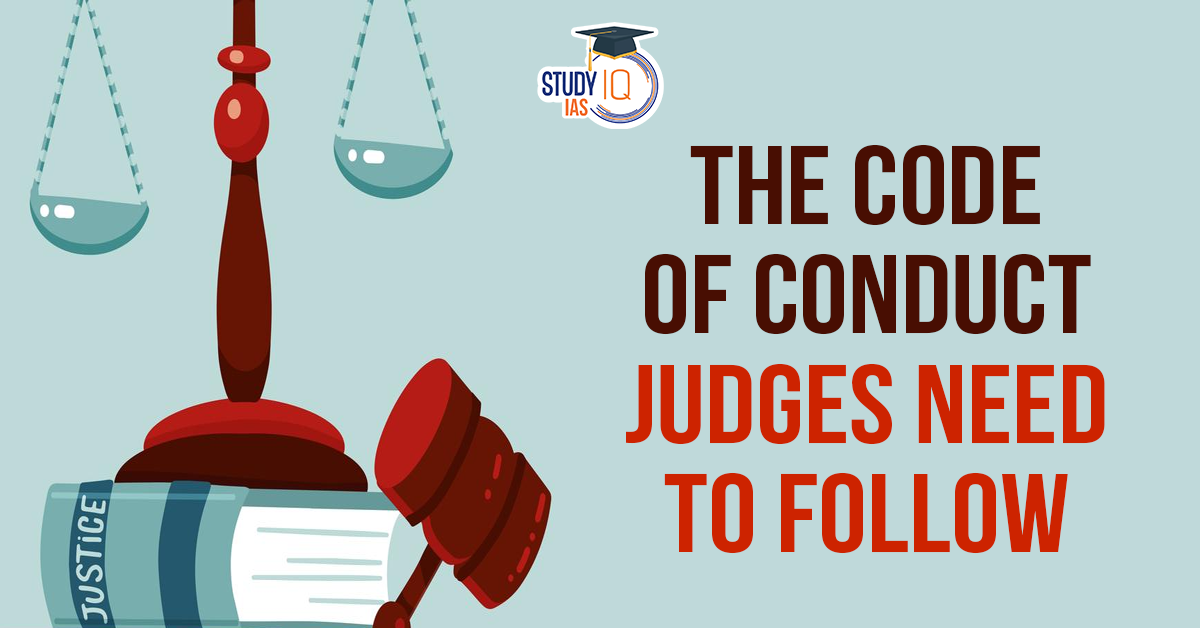Table of Contents
Comments made by Allahabad High Court Judge Justice Shekhar Kumar Yadav at a Vishwa Hindu Parishad event have sparked significant public outrage. His remarks, perceived as derogatory towards the Muslim community, have led to calls for an in-house inquiry into his conduct.
Judicial Ethics
- Judiciary derives its power from two key sources:
- Public acceptance of its authority.
- Integrity of the judiciary.
- The judiciary has established codes of conduct to uphold these principles.
- Restatement of Values of Judicial Life (1997):
- Adopted by the Supreme Court on May 7, 1997.
- Emphasizes the need for judicial behavior to maintain public faith in the judiciary’s impartiality.
- Judges must avoid any act that could undermine the credibility of the judiciary.
- Judges should remember that they are always under public scrutiny.
- Bangalore Principles of Judicial Conduct (2002):
- Provides a framework for judicial behavior.
- Judges must ensure their conduct upholds public confidence in judicial impartiality.
- Judges have the right to freedom of expression but must act in a way that maintains the dignity and independence of their office.
- Judges should be aware of societal diversity and ensure equal treatment for all.
- Restatement of Values of Judicial Life (1997):
Judge Removal Process
By the Parliament
- A judge can be removed from office through a motion passed by Parliament on the grounds of “proved misbehaviour or incapacity.”
- Although the Constitution does not mention the term “impeachment,” it is commonly used to describe the removal process under Article 124 (for Supreme Court judges) and Article 218 (for High Court judges).
Procedure for Removal of Judges (as per the Judges Inquiry Act, 1968)
- Initiation of Impeachment Motion:
- The impeachment motion can originate in either House of Parliament:
- Lok Sabha: Requires a signed notice by at least 100 members.
- Rajya Sabha: Requires a signed notice by at least 50 members.
- The Speaker (for Lok Sabha) or Chairman (for Rajya Sabha) may consult individuals and examine relevant materials before deciding whether to admit or reject the motion.
- The impeachment motion can originate in either House of Parliament:
- Investigation Committee Formation:
- If the motion is admitted, the Speaker or Chairman will form a three-member committee to investigate the charges. The committee consists of:
- A Supreme Court judge
- The Chief Justice of a High Court
- A distinguished jurist
- If the motion is admitted, the Speaker or Chairman will form a three-member committee to investigate the charges. The committee consists of:
- Framing of Charges: The committee frames charges and provides a copy to the judge, who can submit a written defence.
- Committee Report Submission: After completing the investigation, the committee submits its report to the Speaker or Chairman.
- The report is then presented before the concerned House of Parliament.
- Consideration of Motion: If the report finds evidence of misbehaviour or incapacity, the motion for removal is considered and debated in the House.
- Adoption of Motion: The motion must be passed in each House by:
- A majority of the total membership of that House.
- A two-thirds majority of the members present and voting.
- If the motion passes in one House, it is sent to the other House for approval.
- Presidential Order: Once both Houses adopt the motion, it is sent to the President, who issues an order for the judge’s removal.
| Note |
| Except for a removal motion, the legislature cannot discuss a judge’s misconduct. |
In-House Procedure
- Established in 1999 and made public in 2014, this procedure allows judges facing serious allegations to opt for voluntary retirement to avoid public embarrassment.
- The procedure allows a complaint against a High Court judge to:
- Chief Justice of India (CJI).
- Chief Justice of the High Court.
- Procedure for Investigating Complaints:
- Step 1: High Court Chief Justice receives the complaint and may seek a response from the judge.
- Step 2: If further investigation is needed, the complaint and response are forwarded to the CJI.
- Step 3: The CJI can appoint a fact-finding committee consisting of:
- Two Chief Justices from other High Courts.
- One High Court judge.
- Outcome of Investigation: If sufficient grounds are found, the CJI may ask the judge to retire voluntarily.
-
- If the judge refuses, the CJI can inform the President and Prime Minister, leading to impeachment proceedings.
-


 Utkal Divas 2025: Odisha Foundation Day ...
Utkal Divas 2025: Odisha Foundation Day ...
 List of Military Exercises of India 2024...
List of Military Exercises of India 2024...
 GPS Spoofing and Its Impact in India: A ...
GPS Spoofing and Its Impact in India: A ...





















